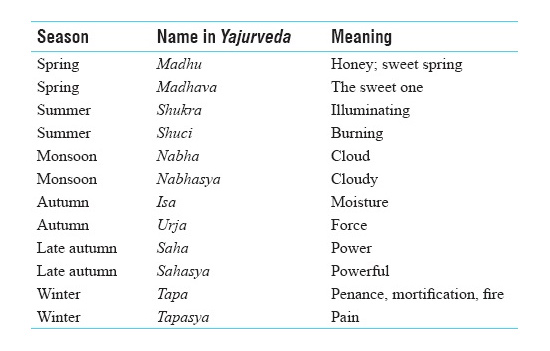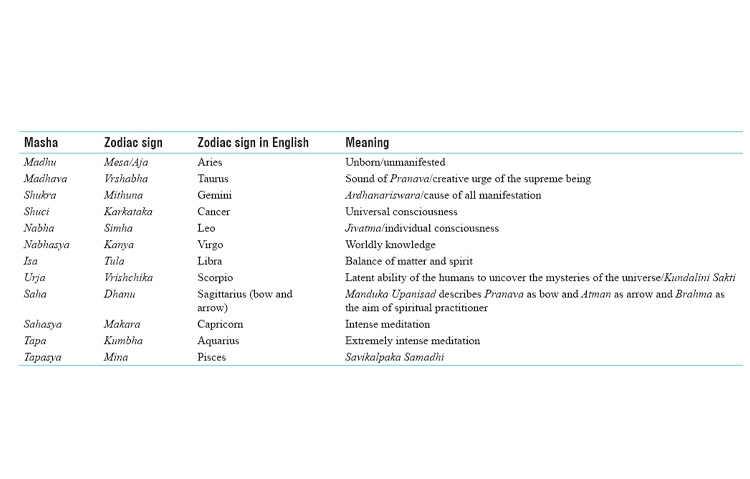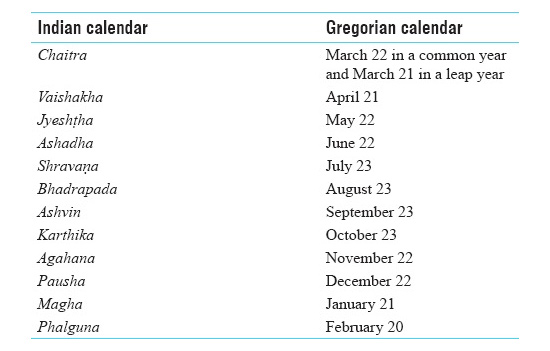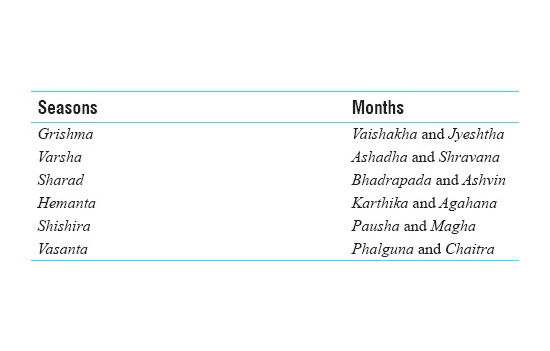- Celebrating festivals have deep Yogic
meaning. This article deals with the festivals of Ayurveda and scope and
challenges of celebrating these festivals. India must revive the lost tradition
of Ayurvedic festivals.
1. Abstract
Background
One of the main ingredients to put human
societies glued together is celebrating the festivals. Festivals are the
markers of scientific achievements and historic milestones. Moreover,
celebrating festival ensures the continuation of tradition. The number of
festivals celebrating Ayurveda are, however, very few. Festivals bring pomp and
glory in lives and are a way of expressing gratitude to the legends for
bringing out the deepest meanings of the cosmos.
Aim:
To revive the lost tradition of
Ayurvedic festivals, the study was undertaken.
Material and methods:
Ayurvedic scriptures and Puranas were
carefully reviewed to find festivals associated with Ayurveda. The paper
reviews the specific dates and the method of celebration of few festivals
associated with Ayurveda such as Dhanvantari Jayanti, Brahma Puja,
Shakrotsava, Kaumudi Mahotsava, Madana Trayodashi, Charaka Jayanti, Kubera
Mahotsava, Varuna Mahotsava, and Yamadamshtra. Dhanvantari Jayanti as
National Ayurveda Day has already gained popularity.
Result:
Festivals foster national cohesiveness,
promote communal harmony, preserve family values, revitalize the economy, and
foster cultural and, in this scenario, even medical tourism. However,
globalizing these festivals is challenging due to difference in calendars.
Conclusion:
Celebrating festivals have deep Yogic
meaning. It helps to maintain national identity. The yearly seasonal cycles
affect the physical and mental health of humans. Hence, there is a need to
revive the traditional Ayurvedic festivals.
2. Introduction
Religious festivals are prominent
features of social life worldwide.1 They
promote economic development, foster the development of social capital, enhance
voluntary public good provision, and raise levels of trust in the society.2
Many countries in the world are
initiating newer festivals in order to promote tourism, boost economy, and
increase bilateral trade. With the largest number of religions in the world,
India is known as the land of festivals with the events ranging from rituals,
songs, hymns, dance, feasts, pyrotechnics, unique sightings of unexplained
phenomena, etc. [3] Festivals
bring pomp and glory into lives and are a way of expressing gratitude to the
legends for bringing out the deepest meanings of the cosmos.
In addition, festivals can be used to
promote Ayurveda. No study has been done on the concept of Ayurvedic festivals.
This article deals with the festivals of Ayurveda and scope and challenges of
celebrating these festivals.
Aims and Objectives
The objectives of the article are to
compile the information regarding the festivals of Ayurveda, to understand the
scientific basis of observing the festivals of Ayurveda and to analyze the
scope and challenges of Ayurvedic festivals.
3. Material and Method
The scriptures of Ayurveda were scanned
for information on festivals and annually recurring events. Puranas were
also carefully studied for information on specific dates and celebration of
annual festivals associated with deities of healing. The search of relevant
modern literature, PubMed, and Scopus-indexed journals was done. The
compilation was then reviewed and analyzed. India is the land of festivals and
every community and tribe celebrate multiple festivals and each of these
festivals is associated with health and spiritual wellness.
This study includes only the festivals
mentioned in Ayurvedic classics and days associated with deities associated
with Ayurveda. The festivals are discussed on astrological lines rather than
medical significance.
Every festival of India has medicinal,
cultural, and environmental significance. [4,5] However, this article specifically focuses only on festivals which are mentioned in classical treatises of Ayurveda and/or are associated with deities of healing. The festivals mentioned in Ḍalhaṇa’s commentary on Susruta Samhita are Sakrotsava, Kaumudi Mahotsava, Madana Mahotsava, and Kubera Mahotsava.[6] Students can take a day off
from their studies on these days.[6]
Yamadamṣṭra is mentioned in Sṛangadhara Samhita as an annual event.[7]
The deities associated with Ayurveda
were compiled from treatises of Ayurveda and days associated with them were
collected from Puranas. The deities associated
with Ayurveda are Brahma, Dhanvantari, Indra, and Charaka.
Dhanvantari Jayanti
One of the earliest and most outstanding
leaders of Indian culture in the field of medicine in general and surgery in
particular was Dhanvantari.[8] The
story of Dhanvantari emerging from milky ocean appears in Bhagavata Puraṇa,
Adiparva of Mahabharata, and Valmiki Ramayana.[9-11]
Harivamsha Purana describes that after emerging from milky ocean, Dhanvantari was accorded the title “Abja” and became the disciple of Bhaskara or the sun God. 12 He reincarnated as the king of Kasi.12 Vayu Purana also repeats the story of Dhanvantari emerging
from milky ocean and his later incarnation as king of Kasi. However, it names
Dhanvantari as the son of Vishnu instead of incarnation of Vishnu.13 Brahmavaivarta Purana narrates
the story of battle between Dhanvantari and goddess Mansadevi, sister of
Vasuki.14 Lord Dhanvantari is
accorded as the disciple of Garuda and Lord Shiva.14
Skanda, Garuda, and Markandeya
Puranas have a different story on Dhanvantari.15 A maiden named Virabhadra carried water and quenched the thirst
of sage Galava who was tired and thirsty. The sage blessed her with a son
proficient in all sciences. The lady later gave birth to Dhanvantari who learnt
Ayurveda from Ashvins and married the daughters of Ashvins. 15
However, none of these texts mention any
dates for any of the Dhanvantaris. However, as per the story of churning of the
milky ocean told in Vishnu Purana, Lakshmi appeared soon after
Dhanvantari.[16] Hence, Dhanvantari Jayanti is celebrated
on Kartika Krishna Trayodashi, i.e., Dhanteras, a day before Lakshmi
Puja.[17] In all other texts, Dhanvantari emerged at the conclusion of churning, after the emergence of Tulsi, and hence, it is also celebrated on Kartika Kṛiṣhṇa Trayodashi. Celebration of Dhanvantari Jayanti widened during the national movement to mobilize the masses against the British oppression. The occasion was utilized to create awareness of Ayurveda. Since 2016, it is also celebrated as “National Ayurveda Day.”18
Brahma Puja
Brahma is the promulgator of Ayurveda.[19] On the 1st day of bright
half of month of Chaitra, Brahma is worshipped using different fragrant
flowers, fumigations, wearing new clothes and jewellery, and fire sacrifices
and by giving Tarpana to Brahmanas.[20] One should observe fast for entire day and night
contemplate God as possessed of a golden complexion, carrying a rosary and
ladle in his right hand and a Kamandalu in his left, and having a long clotted
hairs.[21] He should be worshipped with Gayatri Mantra or with “Om Tat Sat”.[21] This grants prosperity in this life and paradise after
death.[21]
Kaumudi Mahotsava
The full moon day of Kartika month
is called as Kaumudi Mahotsava.[22]Kaumudi
Mahotsava marks the celebration of Ashvin twins.[6] In Kamasutra, it is called as Kaumudi Jagara.[23]
In the Buddhist
works such as Sumangalavilasini of Buddhaghosa, Jatakamala of
Aryasura, Unmadayanti Jataka, and Dhammapada Attakatha, the
description of this festival is seen. People used to decorate their houses with
flowers, colorful buntings, and sprinkle fragrant water on the streets.[22] Men and women put on their
best clothes and enjoyed themselves singing and dancing.[22] At night, the city would be illuminated with well-lit
lamps.[22] In Kashmir, women would sit beside the sacred fire with husband
and children and watch the beauty of the moonlit sky.[24] A fictional drama, Kaumudi Mahotsava by Vijjika
concludes with the restoration of the kingdom by Kalyaṇa Varma on the night
of Kaumudi Mahotsava[25] The
drama Mudrarakshasa also mentions Kaumudi Mahotsava being
celebrated in the present-day Bihar during the times of Mauryas.[26]
Ashvins are Vedic deities
of healing.
Some of the references to the successful treatments of Ashvins, seen in Ṛigveda,
are treating leprosy of Ghosha and Shyava, restoring the youth
of sage Kali, and replacing the leg of queen Visphala with a
prosthetic leg.[27]
Shakrotsava
Indra too is associated with
healing. The science of Ayurveda descended on earth with Indra teaching
the science to the sages for the well-being of mankind.[28] There are also herbs and recipes attributed to Indra in
Charaka Samhita.[29] In Vedas,
healing power of Indra is widely acknowledged. Aphala was
healed of her hypertrichosis by Indra.[27]Shakrotsava is
celebrated on the full moon day of Bhadrapada month.[6]
Kubera Mahotsava
It is celebrated on the day of Uttarayaṇa
Sankranti.[6] This falls every
year on the 14th/15th of January. It was celebrated in Kashmir by giving
ghee and grains to Brahmins as alms.[30]
Madana Mahotsava
It is celebrated on the 13th day of
bright half of lunar month of Chaitra.[6] In
Kashmir, a day before Madana Trayodashi, Lord Vasudeva was worshipped and
the day preceding that Vastu Puja was done.[31] On the previous night, the water anointed with fragrant
flowers and tender leaves is placed in front of Kamadeva, and on the day
of Madana Trayodashi, women are bathed by their husbands with this water.[31] An image of Lord Kamadeva
made from cloths and adorned with garlands and perfumes is worshipped by men
and women who are beautifully decorated.[30] An
image of celestial elephant known as Asoka should be painted with red lead on
the day of Madana Trayodashi and worshipped throughout the year during dusk to
obtain all materialistic objects in life.[32]
Charaka Jayanti
Charaka is considered an incarnation of
Adisheṣha.[33]Charaka Jayanti is
celebrated on Nag Panchami, the 5th day of bright half of lunar month
of Shravana annually.
Yamadamshtra
Yamadamṣhṭra literally means fang
of Yama. It is an annual event which includes last 8 days of Kartika and
first 8 days of Agrayaṇa.[7] During these 16 days, one should eat less to live longer.[7]
4. Discussion
According to Pinda Brahmanda theory,
individual is a miniature of the universe.[34] The
dates of seasonal rites are based on the Vedic concept that seasonal time
influences the subtle body and the mind. Therefore, the festival days,
considered special nodes of seasonal times, have a beneficial effect on the
religious practitioner. The effect of season on
body and mind is not alien to medical science. Contemporary medicine is
investigating the relation between circadian rhythm and seasons.[35,36] Chronobiology studies the
variations in human cognition, physical activity, and moods due to diurnal and
seasonal time cycles.[37]
A person’s stage of life-related sacraments is also based on the principle of interrelationship between the inner celestial sphere within the human beings and the external celestial sphere.[38] Yoga attaches great
importance to the periodical events not because they happen in the universe,
but because they happen in the body and take the Prana (internal sun)
into many otherwise hidden and impenetrable places in the body.[39]
In Yajurveda, the names of months
are referred in terms of Madhu-Madhava and not as the current
practice of Chaitra-Vaishakha. The Yajurveda names imply a
special meaning which relates to the characteristic of the season, as shown in
Table 1. [40]
 Table
1:
Names of Yajurvedic months and their meaning
Table
1:
Names of Yajurvedic months and their meaning
Uttarayana/Kubera
Mahotsava.
Suta Samhita says that inner sun
rises in the zodiac constellation of inner celestial sphere.[41] Swara Yoga, a book based on Tantric work Shiva Svarodaya,
defines the Dakshinayana and Uttarayana as the movement of
inner sun.[42] Ida, Pingala,
and Sushumna do not flow at random but at specific times in
synchronization with the solar/lunar rhythms.[43] Passage of Prana in Pingala occurs
during the first six months and in Ida during the last six months.[42] Passage of Prana from Pingala to Ida is Uttarayana.
Uttarayaṇa is thus conducive for meditation.[44]
This season is selected for meditative
festivals and Vedic rituals pertaining to salvation.[44] Similarly, Dakshinayana is conducive for
attaining worldly objectives. 44
The anterior aspect of the body is
considered Purva, right side as Dakshina, left side as Uttara,
and backbone as Pashchima.[41] Sun
in the internal celestial sphere is called as Prajna and yoga Nadis,
Ida, and Pingala form the ecliptic paths of inner celestial sphere.[41] Inner sun orbits in the inner
ecliptic due to inhalation and exhalation of breath.[41] Inhalations and exhalations are compared to day and night
of an astronomical day, respectively.[41] Movement
of inner sun on the right side of the body is called Dakshinayana and
on the left side is called as Uttarayana. 41 Table 2 lists the association of months with zodiac signs
and their meanings.45
 Table
2:
Relationship between months, zodiac, and their meanings
Table
2:
Relationship between months, zodiac, and their meanings
The aim is to reach Aja, the
unmanifested through the process of intense meditation shedding off the worldly
bondage. Kubera Mahotsava marks the ascent. Kubera Mahotsava is celebrated as Pongal,
Sankranti, Uttarayan, Makara Sankranti, etc. Uttara also means
propitious.
Kaumudi Mahotsava.
It is still considered auspicious and
celebrated throughout the country. However, names and mode of celebrations have
changed. Kaumudi Mahotsava is called
as Lakshadipotsava in Karnataka, Dev Diwali in Varanasi, Kartika
Dipam in Tamil Nadu, Boita Bandana in Orissa, and Tripuri
Purnima in several parts of the country.
Charaka Jayanti.
On the day of Nag Panchami, serpents
Vasuki, Takshaka, Kaliya, Manibhadraka, Airavata, Dhritarashtra, Karkotaka and
Dhananjaya are to be worshipped. 46,47 People
of a tiny hamlet called Charaka Danda near Kotdwar of Uttarakhand celebrate
Charaka during the month of Bhadrapada. 48 The Yearbook of Asiatic Society of India informs that Charaka
Jayanti used to be held during December in the mid-20th century. 49
Yamadamsthra: Festival or
not?
It is not a conventional festival since it is not associated with auspiciousness. However, many religious fasting are practiced in the world as celebration like Islamic Ramadhan where food and drinks are prohibited during day for 28–30 days, Nativity Fast (40 days before Christmas), Lent (48 days prior to Easter), and the Assumption (15 days in August) practiced by Greek Orthodox Christians.[50] These fasting are studied for their health impact.[51,52]
Yamadamshtra, in Gregorian calendar, is
roughly from December 8 to 23. It is partly the duration of Nativity fast.
However, not many studies have been done on Yamadamshtra. Since fasting during Yamadamstra has health benefits,
it should be popularized as a festival.
5. Scope of Ayurvedic festivals
Ancient materials can be invoked to reconstruct a unique tradition for novel purposes. Celebration of Dhanvantari Jayanti during the late 19th century provided a collective consciousness and identity among the physicians and gave their profession a “sacred” aura. 53
Apart from having symbolic value, festivals and other recurring events are often viewed as tourist attractions. Festivals act as vehicles for the mobilization and cementation of local and global communities; strategies for building national and transnational communities and as spatiotemporal events that inspire and determine meaning in people’s lives. 54,55
Festivals also bring together scholars
and practitioners to have conversations on few pertinent problems and the
effective solutions as in Bhasha festival of 1987, Trivandrum.
Festivals help in the formation of a sense of community which transcends the
borders of caste and class. 56 Even
in the current era of fast-paced life, festivals foster national cohesiveness,
promote communal harmony, preserve family values, help maintain national
identity, revitalize the economy, and foster cultural tourism. 57
The events would counter existing
stereotypes about Ayurveda and instead would inform the public about India’s holistic approach to health. A study conducted
in the Lawra traditional area of Ghana suggests that traditional festivals are
being used as platforms to plan and advocate development projects and programs
by involving the local people. 58 The
government of Assam has started Assam State Rural Livelihoods Mission to
promote Traditional festivals. 59
6. Challenges
The calendar confusion
In 1952, calendar Reforms Committee was
formed under the chairmanship of Prof M. N. Saha which collected more than 30
calendars used by Indians in different regions to frame a uniform Calendar for
the nation. The committee recommended a solar and lunar calendar. However, the
Government of India accepted only solar calendar.60 This has led to never-ending calendar confusion.
Thus, the luni-solar Indian National
calendar got permanently fixed to the solar Gregorian calendar, as shown in
Table 3. This has shifted the Madhu month from Chaitra month
by 23 days. 61 Madhu instead of
being in Mesha is now in Mina. One of the doctrines for the
realization of the Supreme Being is called Madhu Vidya.48 Attainment of salvation is the
sweetness of Madhu month. 48
 Table
3
Matching of Indian calendar with Gregorian calendar
Table
3
Matching of Indian calendar with Gregorian calendar
Dr. K. L. Daftari expressed the dissenting opinion on the new calendar
starting with Vaishakha instead of Jyeshtha, as shown in
Table 4. He draws attention to the fact that all ceremonies start in the Vasanta according
to scriptures. 62 He dissented
on following the crude method of adjusting the year to the seasons and instead
urged to adopt more scientific method of gradually changing the beginning of
zodiac in conformity with the actual movements of heaven as was done by the
scholars of Jyotisha several times in the past by adding
intercalary Nakshatra months. 61 However,
the committee rejected his views.
 Table
4
Seasons and months in the new national calendar.
Table
4
Seasons and months in the new national calendar.
Vastness of geographical
area
Time that elapses between two
consecutive sunrises at a place is called as Savana day or civil day.63 For a vast country like India,
which stretches across several longitudes, the sun rises at different times at
different places and the festival should be celebrated on the time calculated
for that region. Furthermore, the equinoxes (Vishivat) and tropical transits do
not fall at the same time all over the country. Hence, celebrating these
festivals as religious events across the country on the same day would be
challenging.
Increase in volume of
tourists
An increase in volume of tourists would
pose a threat to the integrity and value of these festivals.[64] Sustaining
the festivals effectively is another challenge.
Changing times
Keeping the core spiritual values of the
traditional values during the modern times of changing cultural crisis is
challenging. Traditional festivals face a kind of anomie of cultural dilemma,
lack of core values, and emotional identity and popularity of Western festival
culture.65
7. Conclusion
Festivals are occasions to celebrate the
long legacy of Ayurveda. Celebrating festivals preserves values, maintains
national identity, promotes trade, and fosters cultural tourism. It is
challenging to globalize these festivals due to calendar confusions.
Identifying the correct date as per the traditional calendar and practicing the
festivals spiritually is beneficial. Studies need to be done on fasting
festival of Yamadamshtra and its impact on longevity. It is important
to celebrate these festivals in order to preserve cultural identity and to
promote core values.
Financial Support NIL
Source of Support: None. Conflict of
Interest: None.
To know References click here
see article PDF
Article available online/offline on:
AYU, Vol. 44, Issue 1, January-March 2023, Page no 44-49, for more details
please visit: www.ayujournal.org
Address for correspondence: Department of Samhita and Siddhanta, Government Ayurveda Medical College, Mysore, Karnataka, India. E‑mail: bhavanagouri2@gmail.com
No part of this article may be reproduced in full or part without written
permission of the Ayu Journal who can be contacted at ayujournal@yahoo.com
To read all articles on Ayurveda